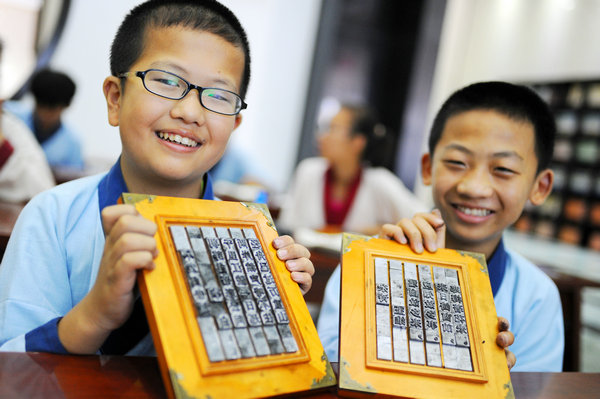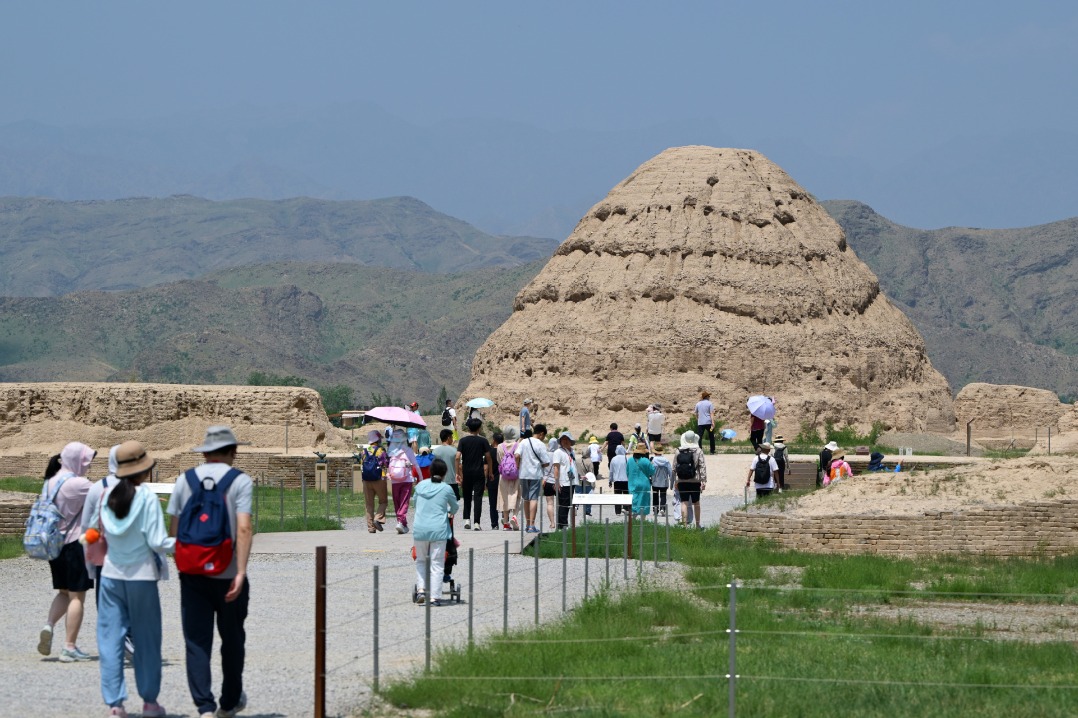Confucius' hometown hosts study tours


Confucius' descendants are keeping the roving sage's legacy alive by designing study tours for visitors to his hometown, particularly students.
Today, students who visit Shandong province's Qufu can learn the lessons the philosopher himself learned and then taught as he wandered around the states during the Spring and Autumn period (770-476 BC).
His temple, family cemetery and family mansion in Qufu-collectively known as the San Kong-were inscribed on the UNESCO World Heritage list in 1994 and are must-sees for all visitors, including students.
The Temple of Confucius is the central site for worshippers from all over the world. It serves as a model for over 2,000 Confucian temples in such places as South Korea, Japan, Vietnam, Indonesia, Singapore and the United States.
The 2,400-year-old Kong Family Cemetery is one of the world's oldest graveyards.
And the Family Mansion of Confucius is one of China's largest and best-preserved surviving building complexes. Its owner, the Kong family, is China's most time-honored noble family, with peerage titles dating back over 2,100 years.
The San Kong hosts over 300 buildings constructed through the Jin (1115-1234), Yuan (1271-1368), Ming (1368-1644) and Qing (1644-1911) dynasties.
The paintings, patterns and materials used in the buildings reflect the different eras' characteristics.
An appreciation of ancient architecture is a component of the study tours.
Students often visit the Architecture Museum near the temple to view miniatures, and build and disassemble models.
"It's hard for me to remember the parts-like what a tenon is-when I just look at the ancient buildings at the temple," says fourth-grader Sun Siqi, who joined a study tour in Qufu in August.
"But by putting together and taking apart the miniatures, I easily learned the parts and their uses, like how can we make buildings stand against strong earthquakes and what kind of structures can enlarge the building's interior space."
The museum's deputy director, Kong Deming, says: "We try to explain ancient architecture in easy ways. We compare the (symbolic) carvings of (sometimes-mythical) animals on rooftops to zoos."
Students who visit the San Kong site are encouraged to search for the creatures they worked with on the models.
The tours expose them to such Confucian values as filial piety, loyalty, respect and contributing to society.
"In the Kong Family Cemetery, we mainly focus on stories about Confucius and his descendants and disciples to help students understand why Confucius is widely respected," explains Chen Lifeng, with the Qufu Teaching and Education Center.
"This may be helpful for them to cultivate healthy views of the world."
The Kong Family Cemetery hosts the tombs of Confucius, who died in 479 BC, and many of his descendants.
Zi Gong, one of Confucius' leading disciples, started planting trees at his master's tomb. Today, over 10,000 cover the grounds.
Students can also engage in activities based on the six areas of study recommended by Confucians-ritual performance, music, archery, chariot-driving, calligraphy and arithmetic.
They can also rub stone tablets, ride horses and play traditional instruments, or even don Han-style clothing to participate in coming-of-age ceremonies.
The sage spread his message throughout China in his lifetime-and it extended around the globe in the millennia following his death.
Today, a growing number of students are discovering the best place to understand his life-and his understanding of how we should live-is in the place where he was born.

































